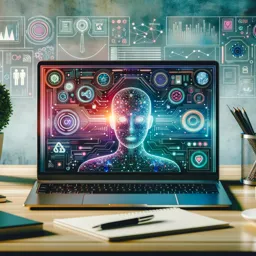Introduction
Computer vision has progressed far beyond basic image classification, now powering real-time object detection systems capable of interpreting live video feeds. This advanced AI capability enables machines to detect and track objects in real time, transforming industries through automation, enhanced monitoring, and intelligent decision-making.
What is Object Detection?
Object detection identifies multiple objects in a single image or video frame and determines their locations. Unlike simple classification, which assigns one label to an entire image, object detection uses bounding boxes to mark where each object appears, enabling more detailed and actionable insights.
Core Components of Object Detection Systems
Real-time detection relies on deep learning models and powerful processing. Key components include:
- Preprocessing: Preparing input images by resizing and normalizing pixel values.
- Feature Extraction: Using convolutional neural networks (CNNs) to detect patterns and shapes.
- Bounding Box Prediction: Applying algorithms like YOLO, SSD, or Faster R-CNN to locate and label objects quickly.
- Postprocessing: Enhancing output accuracy with techniques such as Non-Maximum Suppression (NMS) to remove duplicate detections.
Implementing Real-Time Detection: How it Works
Achieving real-time performance requires processing each video frame swiftly. The workflow includes:
- Capturing live frames from a camera or stream.
- Feeding frames into an optimized deep learning model like YOLOv5.
- Running the model on GPUs or edge AI chips for fast inference.
- Overlaying bounding boxes and labels on the video output in real time.
Developers often use open-source tools like TensorFlow, PyTorch, and OpenCV to build and deploy these systems.
Real-World Applications
Real-time object detection is revolutionizing sectors by automating visual tasks:
- Autonomous Vehicles: Identifying traffic elements to enable safe driving.
- Retail: Facilitating automated checkout and in-store customer analytics.
- Security: Monitoring live footage for unauthorized access or suspicious behavior.
- Manufacturing: Spotting product defects during production for quality assurance.
Challenges and Future Directions
Despite its potential, real-time detection still faces challenges like detecting small or occluded objects, managing cluttered environments, and ensuring stable performance in dynamic conditions. Future trends include:
- Edge Computing: Processing data locally to reduce latency and improve privacy.
- IoT Integration: Connecting vision systems to smart sensors for advanced automation.
- Model Efficiency: Designing lightweight models for real-time inference on portable devices.
Conclusion
Real-time object detection represents a significant leap in computer vision, making machines more aware of and responsive to their environments. As models become more efficient and accessible, this technology will unlock innovative applications across industries, enhancing safety, productivity, and user experience.

































